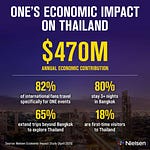UFC, the real predator
UFC fighter pay has long been a topic of concern among fans and pundits, especially with the departure of Francis Ngannou earlier this year chewing up the news cycle. Ngannou would finally announce his historic PFL deal last week, setting tongues wagging and catching the attention of the entire community. The Cameroonian-born champion went to the negotiating table numerous times to secure a better deal for himself, all to no avail, so when his sunset provision kicked in, the UFC waived any exclusivity periods due them and Francis became a free agent.
Many UFC fighters have called for better pay over the years, with the likes of Randy Couture, Tito Ortiz and Andrei Arlovski notably leaving the promotion after achieving lofty heights there, all in the name of getting better purses. All three returned after seemingly drawing a line in the sand, with Arlovski still fighting for the promotion to this day. Nothing changed as a result of their public battles with the company. As a matter of fact, the UFC actually made their standard contract even more draconian and restrictive.
It seems doubtful Francis would ever find himself back in the Octagon given his age and the ink barely being dry on his new PFL contract. The details of his contract give him unprecedented freedom from a champion's clause, allows him to box and likely without having to co-promote with PFL, and perhaps most notably, it would ensure that his future PFL opponents are paid fairly ($2M/fight).
The revenue split
The PFL detailed a plan in 2022 to award a much bigger percentage of their PPV revenue to the fighters, somewhere in the neighborhood of 50% (it should be noted that plan references PPV revenue only). The UFC, by comparison, has been in the 17%-18% range (total revenue) for many years, resulting in two separate class action suits against them. Their recent SEC filings and 2022 earnings has that percentage dropping all the way down to what John Nash estimates to be a range of 13% - 14.5% thanks to a reduction in "athlete costs" which includes fighter purses. That's right, fighters are getting even less of the pie now and with heavier restrictions on their contracts that currently include waiving rights to class action suits.
The new information shows the UFC made a whopping $1.14B in revenue last year with around $800M in media rights/content deals. According to the filing, they cut $32.8M in fighter costs/pay from 2021 to 2022, paying out just $146M out of $1.14B (down from $178M in 2021), despite revenue increasing by $110M and net income by $120M.
When the UFC-WWE merger was announced, a new $12B+ valuation of the UFC came out, which is 3x the value of its 2016 sale (that clocked in at a little over $4B). The fighters are now receiving significantly less revenue than ever before, and the UFC is raking it in.
Listen up!
We discussed these topics in the episode, as well.
How a shared streaming platform between UFC and WWE might look
How right of first refusal works
Negotiating an exit from a broadcast deal
Manipulation of live gate and PPV numbers
Ari Emmanuel's comments about "multiple suitors"
The Hey Not the Face! Podcast is an independent publication. Please subscribe to keep up with our best work and learn how you can support us.







Share this post